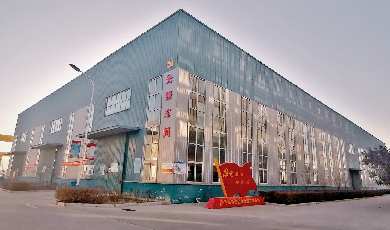- Albanian
- Arabic
- Belarusian
- Bengali
- Czech
- English
- French
- German
- Hebrew
- Hungarian
- Indonesian
- irish
- Italian
- Japanese
- kazakh
- Persian
- Russian
- Thai
- Uzbek
- Vietnamese
roller coaster graph equations
Understanding Roller Coaster Graph Equations
Roller coasters are not just thrilling amusement park rides; they are also fascinating examples of physics and mathematics in action. The curves and dips of a roller coaster can be represented using mathematical equations and graphs, which help engineers design these exhilarating structures while ensuring safety and a fun experience for riders. Let’s dive into the world of roller coaster graph equations and explore how they come to life.
The Basics of Roller Coaster Design
A roller coaster's design involves multiple elements, including steep drops, sharp turns, and smooth hills. These elements can be modeled using various mathematical functions. The primary goal is to create a layout that maximizes excitement while adhering to safety standards. To achieve this, engineers often use a combination of polynomial equations, trigonometric functions, and sometimes even sinusoidal waves.
Key Components Curves and G-forces
One of the crucial aspects of roller coasters is the shape of the track, which can be represented graphically. The height of the coaster at any point along the track can be described using a function \( f(x) \), where \( x \) is the horizontal distance traveled along the track. For example, a simple hill can be modeled as a quadratic function
\[ f(x) = ax^2 + bx + c \]
Here, \( a \), \( b \), and \( c \) are constants that determine the steepness and position of the curve. A positive \( a \) value creates a parabola that opens upward, resembling a hill, while a negative \( a \) value would create a downward-opening parabola, ideal for a drop.
The physical forces experienced by riders, primarily the G-forces, must also be taken into account. As a roller coaster accelerates or changes direction, it exerts forces on the riders, which can be calculated using derivatives of the function. For example, the first derivative \( f'(x) \) gives the slope of the tangent line at any point on the curve, indicating the coaster’s steepness. A steeper slope results in higher G-forces, contributing to the thrill of the ride.
roller coaster graph equations

Sinusoidal Functions for Loops and Twists
When designing loops and twists, engineers often employ sinusoidal functions to replicate the smooth, circular motion riders experience. A simple loop can be described using equations involving sine or cosine functions
\[ f(x) = A \sin(B(x - C)) + D \]
In this equation, \( A \) determines the amplitude (height of the loop), \( B \) affects the frequency (how many loops within a given distance), \( C \) shifts the curve horizontally, and \( D \) shifts it vertically. Loops designed with these functions ensure that the transitions are gradual, allowing riders to feel the excitement without excessive G-forces that might cause discomfort.
Safety and Testing
Once the mathematical equations are established, physical prototypes are often created. Engineers utilize computer simulations to test how the coaster will behave based on the proposed equations before actual construction begins. These simulations incorporate physics principles, such as energy conservation, where potential energy at the highest points converts into kinetic energy as the coaster descends.
After creating the initial designs, testing the ride through various scenarios—such as changes in weight and speed—is essential to ensure safety. Adjustments are frequently made to the equations to refine the design before the final construction.
Conclusion
The mathematics behind roller coasters is an exciting blend of physics and engineering that helps create the thrilling experiences we enjoy today. By using functions like quadratics and sinusoidal waves, engineers can design tracks that push the boundaries of excitement while maintaining safety. Next time you ride a roller coaster, take a moment to appreciate the intricate calculations and graph equations that have made that exhilarating experience possible!
-
Flume Ride-Hebei Zhipao Amusement Equipment Manufacturing Co., Ltd.|Thrilling Water Attraction&Customizable DesignJul.30,2025
-
Flume Ride - Hebei Zhipao Amusement Equipment | Water Coaster, Thrilling DescentJul.30,2025
-
Flume Ride - Hebei Zhipao | Thrilling Water AttractionJul.30,2025
-
Flume Ride: Thrilling Water Attraction by Hebei Zhipao|Log Flume Manufacturers&Flume Ride DesignJul.30,2025
-
Flume Ride-Hebei Zhipao Amusement Equipment Manufacturing Co., Ltd.|Thrilling Water Coaster, Safe DesignJul.30,2025
-
Flume Ride-Hebei Zhipao Amusement Equipment Manufacturing Co., Ltd.|Thrilling Water Attraction, Safe DesignJul.30,2025
